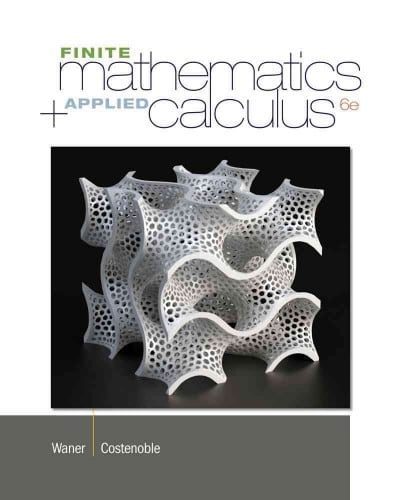Question
n this problem, assume that the distribution of differences is approximately normal. Note : For degrees of freedom d . f . not in the
n this problem, assume that the distribution of differences is approximately normal.Note: For degrees of freedomd.f. not in the Student'sttable, use the closestd.f. that issmaller. In some situations, this choice ofd.f. may increase theP-value by a small amount and therefore produce a slightly more "conservative" answer.
At five weather stations on Trail Ridge Road in Rocky Mountain National Park, the peak wind gusts (in miles per hour) for January and April are recorded below.
Weather Station| 1 | 2 | 3 | 4 | 5
January| 135 | 124| 128 | 64 | 78
April| 108 | 111 | 102 | 88 | 61
Does this information indicate that the peak wind gusts are higher in January than in April? Use= 0.01. (Letd= JanuaryApril.)
(a) What is the level of significance?
(b) State the null and alternate hypotheses. Will you use a left-tailed, right-tailed, or two-tailed test?
- H0:d= 0;H1:d0; two-tailed
- H0:d= 0;H1:d> 0; right-tailed
- H0:d> 0;H1:d= 0; right-tailed
- H0:d= 0;H1:d< 0; left-tailed
(c) What sampling distribution will you use? What assumptions are you making?
- 1. The standard normal. We assume thatdhas an approximately normal distribution.
- 2. The Student'st. We assume thatdhas an approximately uniform distribution.
- 3. The standard normal. We assume thatdhas an approximately uniform distribution.
- 4. The Student'st. We assume thatdhas an approximately normal distribution.
(d) What is the value of the sample test statistic? (Round your answer to three decimal places.)
(e) Find (or estimate) theP-value.
- P-value > 0.250
- 0.125 <P-value < 0.250
- 0.050 <P-value < 0.125
- 0.025 <P-value < 0.050
- 0.005 <P-value < 0.025
- P-value < 0.005
(f) Sketch the sampling distribution and show the area corresponding to theP-value.
(g) Based on your answers in parts (a) to (c), will you reject or fail to reject the null hypothesis? Are the data statistically significant at level?
- At the= 0.01 level, we fail to reject the null hypothesis and conclude the data are statistically significant.
- At the= 0.01 level, we reject the null hypothesis and conclude the data are statistically significant.
- At the= 0.01 level, we reject the null hypothesis and conclude the data are not statistically significant.
- At the= 0.01 level, we fail to reject the null hypothesis and conclude the data are not statistically significant.
(h) State your conclusion in the context of the application.
- Fail to reject the null hypothesis, there is sufficient evidence to claim average peak wind gusts are higher in January.
- Reject the null hypothesis, there is sufficient evidence to claim average peak wind gusts are higher in January.
- Reject the null hypothesis, there is insufficient evidence to claim average peak wind gusts are higher in January.
- Fail to reject the null hypothesis, there is insufficient evidence to claim average peak wind gusts are higher in January.
Step by Step Solution
There are 3 Steps involved in it
Step: 1

Get Instant Access to Expert-Tailored Solutions
See step-by-step solutions with expert insights and AI powered tools for academic success
Step: 2

Step: 3

Ace Your Homework with AI
Get the answers you need in no time with our AI-driven, step-by-step assistance
Get Started


